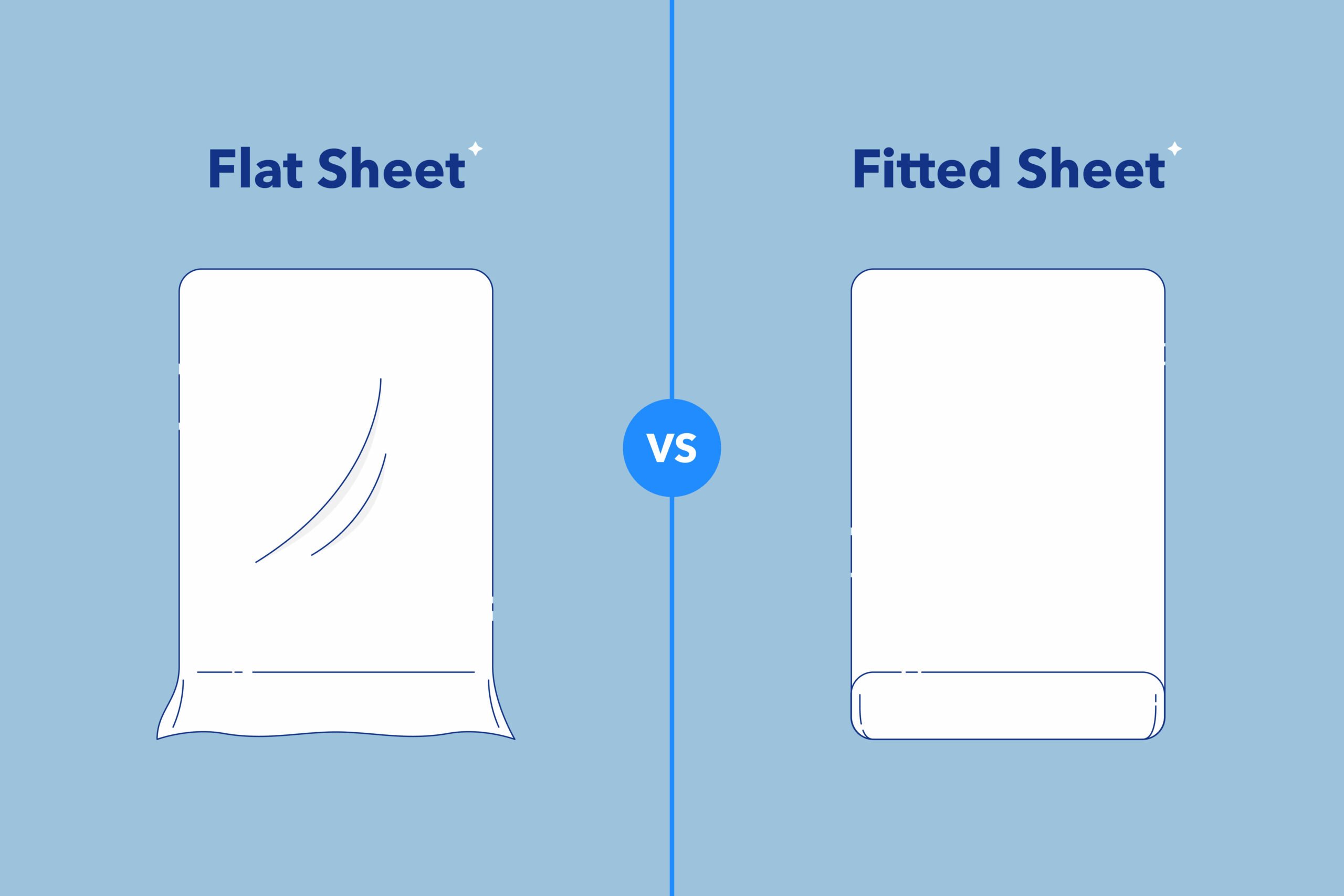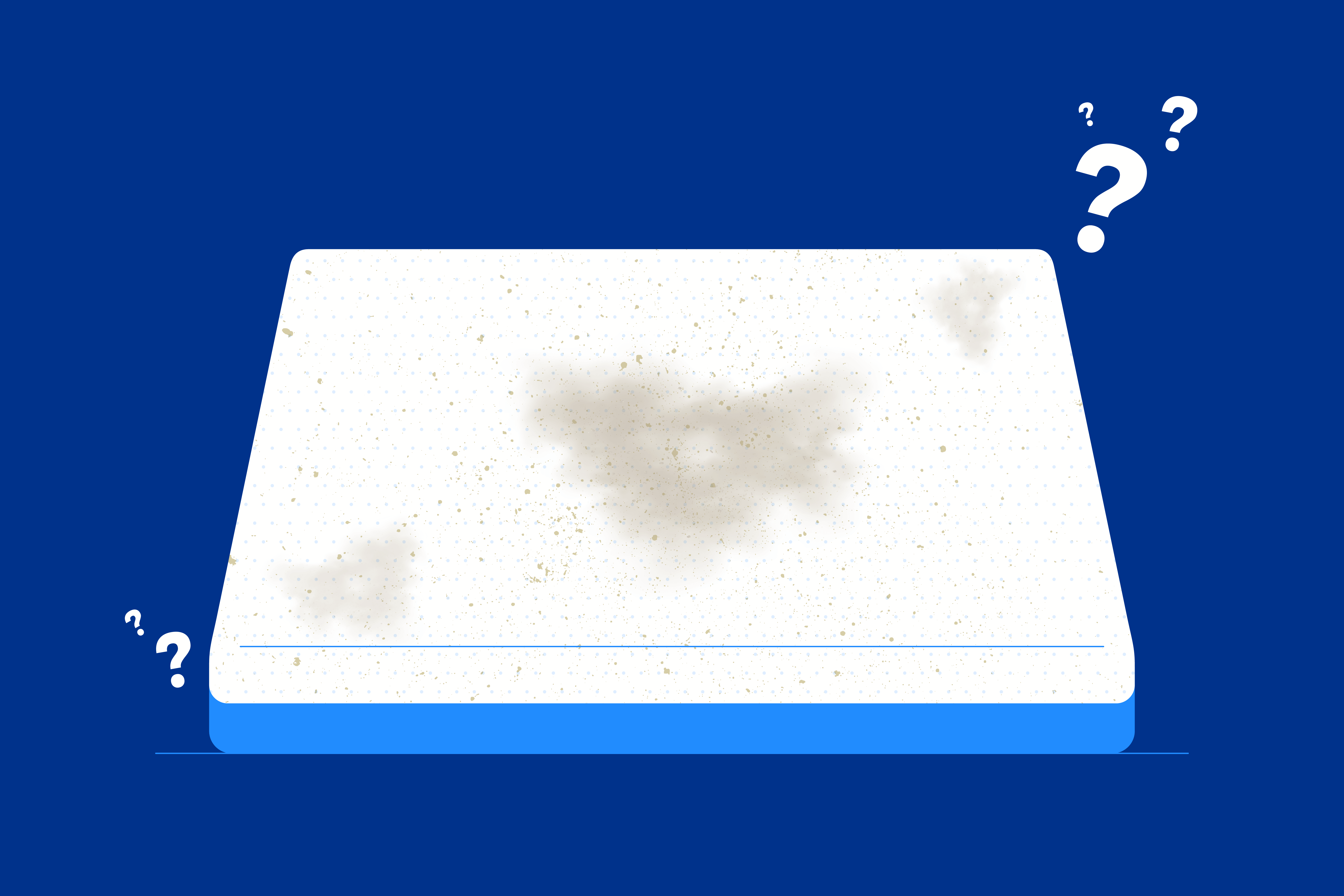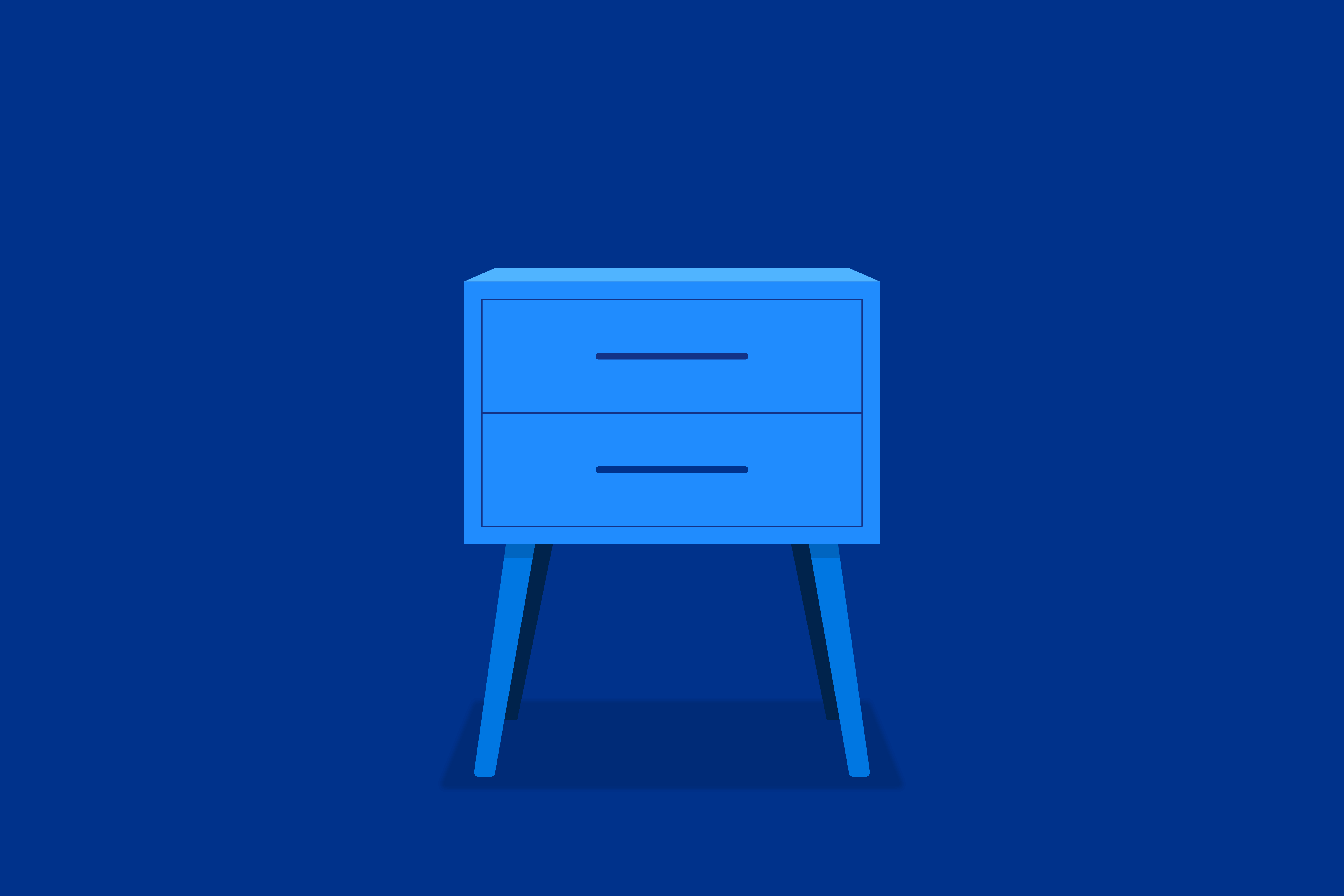Key Takeaways
- Flat Sheets for Breathability: Flat sheets offer superior breathability, making them an ideal choice for those who tend to sleep hot. The lightweight fabric facilitates air circulation, providing a cooling effect that enhances comfort during warmer nights.
- Fitted Sheets for Secure Fit: Fitted sheets with elastic edges ensure a snug fit over mattresses, preventing them from slipping off during the night. This secure fit contributes to a neat and well-made bed appearance, and it’s particularly advantageous for individuals who move around while sleeping.
- Combining Both for Versatility: The choice between flat and fitted sheets ultimately depends on personal preference. Some may prefer the secure fit of a fitted sheet, while others enjoy the layered comfort and decorative options that flat sheets provide. Combining both types allows for a versatile bedding ensemble that meets individual comfort and aesthetic needs.
When it comes to bedding, few topics spark as much debate as flat sheets versus fitted sheets. Both have their passionate defenders and detractors, with valid points on each side.
Should you use one, the other, or both bed sheets? Read on as we settle this age-old bedding battle once and for all.
Best Amerisleep Sheets
Quick Guide: A 30-Second Summary
| Best Bed Sheet Set | Amerisleep Bamboo Sheets |
What Is a Flat Sheet?
A flat sheet is precisely as it sounds—a rectangular fabric sheet with hemmed edges but lacking elastic or contours, often referred to as a top sheet. Its primary purpose is to act as a protective layer between you and your heavier blankets, absorbing sweat and body oils, thereby maintaining the cleanliness of your comforter or duvet.
Flat sheets usually have a lighter fabric, making it perfect for those people who sleep hot. To keep a flat sheet securely tucked in and covering the entire mattress, sheet clips or stretchy bands can be employed, ensuring a smooth and soft surface on the bottom sheet.
Many people rely on flat sheets for effective temperature regulation during sleep. The lightweight fabric facilitates the passage of air, providing a cooling effect that is especially beneficial for those prone to overheating during the night. In warmer climates, a flat sheet can often suffice to ensure a comfortable night’s rest.
Beyond temperature control, flat sheets also contribute to a luxurious experience by offering an additional tucked-in layer, reminiscent of the comfort found in hotel bed sheets. Not only do top sheets provide a soft and cozy surface, but they also serve as a protective barrier, acting as an ideal mattress cover or complement to a mattress topper.
Choosing the best material with a high thread count for top sheets ensures optimal comfort and functionality in creating a restful sleep environment.
What Is a Fitted Sheet?
A fitted sheet, often referred to as a bottom sheet, is equipped with elasticated corners and sometimes along the edges, ensuring a snug fit over mattresses of various sizes. The bottom corners have an elastic feature that is crucial in securing the sheet in place, guaranteeing that your sheets will not be removed during the night, providing the foundation for a comfortable and uninterrupted sleep.
When shopping for fitted sheets, it’s essential to choose the right sheets tailored to your mattress size. Many luxurious bedding sets feature fitted sheets that not only offer a perfect fit but also add a touch of elegance with their luxurious sheen. To ensure a good night’s sleep, shop for fitted sheets that complement your mattress size and contribute to a cohesive and stylish bedding ensemble.
Fitted sheets play a crucial role in safeguarding your mattress against sweat, skin cells, and other debris that might otherwise become embedded in the mattress fibers. The elastic corners of these rectangular sheets ensure a secure fit, preventing shifting or bunching during the night.
This tailored design ensures the sheet stays securely in place while providing a smooth surface for a comfortable night’s sleep. If you want to keep sheets on an adjustable bed, sheet fasteners may be necessary, however.
Opting for the correct size, especially in the case of a deep fitted sheet or a rectangular sheet, provides numerous benefits, keeping your mattress clean and well-protected. Particularly beneficial for thicker mattresses, deep fitted sheets offer a custom fit and a supple feel, adapting seamlessly to the mattress contours.
A fitted bed sheet, designed with four elastic corners, serves as both a snug covering and a barrier against things that might stain your mattress. However, a mattress protector is the best way to keep your mattress clean.
They also work harmoniously with other bed linens, such as keeping your duvet cover clean and enhancing the overall aesthetic appeal of your bed.
Key Differences Between Flat and Fitted Sheets
While flat and fitted sheets share some similarities, there are key differences to consider, mainly shaped by individual preferences:
- Shape: Fitted sheets feature rounded, elasticized corners, making them a bit more challenging to fold and store neatly compared to flat sheets with square corners.
- Use: Fitted sheets go directly underneath you, providing a protective cover for the mattress, while flat sheets lay on top of you and under blankets.
- Maintenance: Flat sheets are more prone to wrinkling due to their loose nature, often requiring additional ironing or tugging to maintain a neat appearance. In contrast, fitted sheets maintain a crisp shape when stretched over the mattress.
- Versatility: Flat sheets offer more versatility, allowing for layering or using them alone in warm weather. Fitted sheets primarily serve as a protective layer for the mattress.
Both types of sheets are designed for convenience, as they are machine washable, making them suitable for households with younger members or those seeking ease in their bedding routine.
When considering flat vs fitted sheets, weigh in the main difference. It ultimately comes down to personal taste and the desired look and feel for your personal space.
Pros and Cons of Flat and Fitted Sheets
Flat Sheet Pros:
- Provides a breathable layer between you and your blankets
- More versatile – can use as only sheet or as an extra thin blanket
- Easy to fold, wash, and store
- Can still use if it’s the slightly wrong size
Flat Sheet Cons:
- Can come untucked while sleeping
- May require frequent washing
- Prone to wrinkling
Fitted Sheet Pros:
- Snug fit hugs mattress securely
- Stays neatly in place all night
- Protects mattress from wear and tear
- Less prone to wrinkling
Fitted Sheet Cons:
- Challenging to fold up neatly
- Must be precisely the right size for the mattress
- Elastic may wear out faster than fabric
Can You Use a Flat Sheet as a Fitted Sheet?
While not ideal, it is possible to use a flat sheet on your mattress instead of a fitted one. The trick is tucking it very securely under the mattress. Look up “hospital corners” for the best technique. Pull the corners tight and tuck the edges beneath the mattress.
Using a flat sheet this way comes with some drawbacks. Fit issues, bunching, and untucking are likely. They’re especially far from the best sheets for adjustable beds, as they’re likely to move out of place as the frame shifts angles.
Flat sheets also lack the mattress-protecting powers of fitted. But in a pinch, a flat sheet is better than nothing.
Choosing the Right Sheet for You
When deciding between flat and fitted sheets, consider these factors:
- Sleep Habits: Fidgety sleepers may prefer a fitted sheet that stays put. Flat sheets easily come loose.
- Climate: Hot and humid climates benefit from the breathability of a flat sheet.
- Mattress Thickness: Deep mattresses need deep pocket fitted sheets. Flat sheets work for any mattress thickness.
Experiment by sleeping with just a fitted, just a flat, or both. See what setup gives you the best rest. If you worry that deep pocket sheets may not lie flat, sheet fasteners can help you achieve a smoother surface.
Ultimately, it comes down to whether you sleep best with the extra layer of a flat sheet or prefer the simplicity of just a fitted. As a side note, we cannot recommend sleeping without sheets entirely.
Caring for and Washing Your Sheets
To keep sheets fresh, wash your sheets every 1-2 weeks. The ideal water temperature depends on the fabric.
Follow laundry care instructions and washing symbols so elastic maintains integrity. Avoid bleach and fabric softener which can cause damage.
We have a number of guides on the specifics of sheet care, from washing tips to ironing them for a crisp, smooth feel:
- How to Get Blood Out of Sheets
- How to Make Sheets White with Household Items
- Can You Wash Sheets with Clothes and Other Items?
- How to Iron Sheets Like a Pro
Proper storage is also key. Keep sheets in a cool, dry place inside a sealed container to prevent dust, mold and mildew. Neatly folding fitted sheets takes practice.
Different Sheet Fabrics and Weaves
Sheet fabric affects softness, breathability, wrinkling, and other factors. Popular choices include:
- Cotton – soft, breathable, wrinkles easily
- Linen – lightweight, textured, wrinkles easily
- Sateen – silky smooth, less breathable
- Percale – crisp and matte, good breathability
- Microfiber – budget-friendly, soft, wrinkle-resistant
- Bamboo – silky, temperature regulating
- Flannel – soft, warm, cozy
Thread Count and Sheet Quality
Thread count refers to the number of threads woven into each square inch of fabric. A higher number means more threads and often a softer sheet. Watch out for inflated thread counts, though – anything over 500 is often meaningless. Focus more on the weave and fabric quality.
Price can be indicative of sheet quality. Budget sheets may use inferior short-staple cotton and less durable construction. Splurging on luxury sheets often yields superior longevity, softness, and performance. Mid-range prices like ours get you excellent quality without the outrageous designer markup.
FAQs
Do you sleep on or under a flat sheet?
The choice of sleeping on or under a flat sheet is a matter of personal preference. Some individuals find comfort in sleeping directly under the flat sheet, enjoying the soft and breathable layer against their skin. Others may prefer to sleep on top of the flat sheet, using it as an additional cover to regulate body temperature while still benefiting from the smooth texture.
You may even wish to use a top sheet over a blanket or comforter to mimic a hotel’s coverlet, rather than lie directly underneath it.
What is the point of flat sheets?
Flat sheets serve several purposes in bedding. One primary function is to add an extra layer of comfort and warmth to the bed. They act as a barrier between the sleeper and the heavier blanket or duvet, providing a soft and breathable layer for a more comfortable night’s sleep.
Additionally, flat sheets are often used for decorative purposes, contributing to the overall aesthetic of the bed ensemble. They can be folded back over blankets or duvets to showcase patterns or colors, adding a touch of style to the bedroom. However, it’s possible to have a bedspread with a blanket or coverlet, or even use a duvet cover as a bedspread.
Do I need both fitted and flat sheets?
The choice between fitted and flat sheets depends on personal preference and the desired look and feel of the bed. Fitted sheets have elastic edges and are designed to snugly fit around the mattress, preventing them from slipping off during the night. They provide a tailored and neat appearance to the bed.
On the other hand, flat sheets offer versatility, as they can be used for both decorative and practical purposes. Some individuals opt for both fitted and flat sheets to combine the benefits of a secure mattress covering with the added layer and style provided by flat sheets.
Is a flat sheet better than a fitted sheet?
The preference for flat or fitted sheets is subjective and depends on individual comfort and aesthetic preferences. Fitted sheets are practical for ensuring a snug fit on the mattress, preventing them from coming loose during the night. They offer a tidy and secure appearance.
Conversely, flat sheets provide a versatile bedding option, offering comfort and a decorative element to the bed. Whether one is better than the other depends on personal priorities, with some people choosing to use a combination of both for a well-rounded bedding ensemble.
What is the 3-sheet method?
The 3-sheet method, commonly used in hotels, involves layering three sheets on the bed for a polished and comfortable look. The first layer is a fitted or flat sheet placed directly on the mattress. This provides a secure base and ensures a clean and tidy appearance.
The second layer is another flat sheet that adds an extra level of comfort and serves as a barrier between the sleeper and any heavier bedding. The third layer is the additional top sheet, covering the blanket or duvet. This method not only enhances the bed’s aesthetics but also allows for easy adjustments to achieve the desired level of warmth and comfort. It’s a popular choice in the hospitality industry for creating a well-made and inviting bed.
Flat or Fitted: The Final Verdict
So, which is better after all – flat or fitted sheets? The truth is, there’s no universally “right” option. It comes down to your personal preferences and needs. Those who love creating a luxe hotel-style bed may prefer adding a flat sheet. Hot sleepers benefit from the extra breathable layer. If simplicity and ease are more your style, a fitted sheet alone gets the job done nicely.
Ultimately, high-quality bamboo, cotton or linen, available in both flat and fitted sheet styles, provides versatile options for your bedding. Keeping a flat sheet on hand offers the flexibility to layer it over the fitted sheet when desired, providing an additional layer of comfort.
We recommend experimenting with both approaches to discover what helps you sleep soundly through the night. These few tips can guide you in finding the best sheet combination for your personal comfort and preferences.
About the author
April Mayer is a sleep expert and writer with a degree in exercise physiology. She has dedicated her career to exploring the relationship between sleep and productivity. Her insightful articles, such as "The Surprising Way Your Mood Might Be Messing With Your Productivity" and "Wake Up to More Productive Mornings," have been featured in reputable publications like Forbes, Greatist, Real Homes, Thrillist, Tom's Guide, and Eat This, Not That. With a passion for helping others lead more productive lives through restful sleep, April offers valuable expertise on foods and vitamins for better sleep. As a trusted member of the Early Bird team since March 2020, she continues to provide informative and well-researched content.
View all posts





